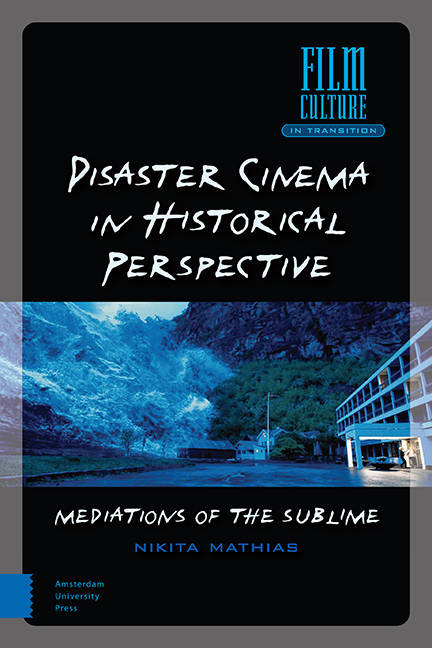5 - Cinema – A Medium of the Sublime?
Published online by Cambridge University Press: 20 November 2020
Summary
Abstract
I set out to explore cinema in terms of its potential function as a medium of the sublime. Burke and Kant's accounts of the sublime are employed to examine their correlation with cinema's technological, formal, and receptive repertoire. This encompasses intrinsic features such as cinematography's innovation of putting in motion photographic images, aspects of the montage, the aesthetic potential of the camera as cinema's central organ of expression and perception, sound effects, and multimedia interplay as well as external features of cinema which constitute the medium as a concrete space for cinematic experiences. To what extent do these various features provoke, facilitate, mediate, or participate in a sensory and affective overpowering of the viewer?
Keywords: Vivian Sobchack, Thomas Morsch, Somatic Film Theory, Technological History of Cinema, Immersion, Media History
After having traced the sublime's iconography up until the decline of the Panorama and the Diorama, I will investigate in this chapter the medium of cinema, particularly in terms of its potential function as a medium of the sublime. The chapter represents a connecting link between the previous historical enquiry and the subsequent film analysis of the disaster genre. An analysis of the technological and receptive fundament of the medium of cinema allows for comparative references to earlier visual media of the sublime. Note, however, that this enquiry will be limited to cinema's technological and general receptive dimensions; thematic aspects and experiences of specific films will be dealt with later in the film analysis.
As for the description of cinema's technological features, one must consider the transformations that cinema has been going through over the years. There is not just one cinematic medium to be described but a variety of devices and modes of presentation and performance. Thus, it is crucial to reflect on the technological history of cinema and discuss different concepts associated with its historical stages, such as the distinction between the cinema of attractions and narrative cinema. To a certain degree, a historical investigation of cinema must further include social and economic factors as well as public discourses which have informed contemporary practices of cinematic production and reception.
- Type
- Chapter
- Information
- Disaster Cinema in Historical PerspectiveMediations of the Sublime, pp. 141 - 172Publisher: Amsterdam University PressPrint publication year: 2020



